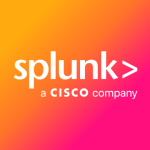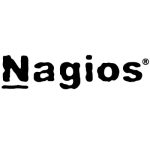What is our primary use case?
We use it to manage customers and to keep an eye on when stuff goes down or when stuff is not working as intended. We monitor mostly servers, but we use it to monitor websites and some of the network infrastructure as well.
How has it helped my organization?
With the monitoring, certainly for some of our customers that are hosting websites, we've added in PRTG's advanced http sensors, to provide them site monitoring in addition to the server monitoring which we were doing. We can pass the information on to them when they have issues, as opposed to them not knowing until one of their customers contacts them.
I would say the solution makes our IT department more cost-effective because it allows us to respond to things a lot quicker. We can get an idea of where a problem lies in the server, if it's hardware. It saves a bit of time of trying to track down a problem.
It also tells us when we're running into problems with certain bits of infrastructure that we're monitoring.
What is most valuable?
- It's really easy to use.
- You can see as soon as there is a problem and you can track it down pretty quickly.
- You don't have to go through loads of options to find when something goes wrong.
It's very easy to manage when you've got time to do some work on it: things like adding devices, adding groups, adding sensor clusters, and being able to clone and move stuff around.
I really like the Desktop app. I'm not a big fan of the web app because I've had some browser issues with it. Since finding the desktop app, I have used that exclusively.
Thinking about the overall feature set, I've had no problems with the features that I use. It hasn't happened that I've thought, "I wish I could do this," without being able to usually find an option to do it. Among those options are things like multiple users, different types of reporting, and different actions that occur after a sensor starts. There's always been something in there. I wanted it to auto-confirm when an error does come up in the test lab and, on PRTG's website, they had an API string to do that. Everything that I've needed to do, I've been able to find in the program or on their website.
What needs improvement?
It has to be installed on a Windows machine. We'd prefer it if we could install the actual control panel on a Linux.
In addition, I wouldn't mind better categories for the sensors. When I go to add a new sensor for a new device, there are some categories in there already, and they can be filtered out, but there's quite a large pool of sensors. That's one thing that I always struggle with. When I want to go in and find something quite specific, I have got to scroll down and scroll down to find what I'm actually looking for, if I want something that I may not have used before.
With their "recommend sensors" feature, I wouldn't mind seeing that being a bit more able to scan the device that it goes on, as it doesn't necessarily pick up everything that is on there, as it should.
What do I think about the stability of the solution?
It's rock solid. We restart it, and the Windows machine it sits on, once a month because it's recommended to do so, to update it. We have not had any issues with it going down or not working as intended.
What do I think about the scalability of the solution?
We've been able to scale it up as we've brought more and more customers on. Having a sensor pool which we can dip into and use has been good. If we brought on five or ten customers, we could scale it up quite quickly with cloning and copying of templates.
Which solution did I use previously and why did I switch?
We started off using open source, Nagios/Cacti-type monitoring software utilities. Yes, they're open source and they don't cost you anything, but adding devices is quite cumbersome, the management is quite difficult, and the training is more difficult. Whereas, the UI of PRTG is much easier to use; much more intuitive.
Everybody generally starts off open-source, something that won't cost you much, but they soon realize the limits of open-source. PRTG is a company that has invested a lot of time and effort building it to make easy to use, to give it a nice UI, and to make it as responsive as it is. It's just a natural progression.
The driving factor in the decision wasn't that we experienced system downtime, it was the fact that we needed something more enterprise-oriented and something that was easier to use and manage, which PRTG is, compared to Nagios. When something like Nagios breaks, it's quite difficult to get it working again, whereas with PRTG, once you buy a block of sensors you get some support for 12 or 24 months, and you've got somebody to fall back on if you ever need it.
How was the initial setup?
It was already in place when I started with the company. We've moved it across to another system and I've re-set that up and it was just a matter of installing it, setting it up. It was fine, no problems. The usual control-panel install wizard made it very easy to import our old data from our previous install into it as well.
It took about 15 to 20 minutes, from the time we set up the solution until it provided us with feedback on the IT infrastructure. That was after we imported all the other data into it.
What was our ROI?
ROI is hard to measure on something like this. It has helped us out in identifying problems that are likely to happen or that are about to happen or even when they happen. We get notified as quickly as possible. To measure the ROI on that is not an easy thing to do. But, in terms of customer service, it has helped us because we are obviously much more proactive. We notice things before a customer reports them to us. For customer service there would have been some ROI, but it is hard to quantify.
What's my experience with pricing, setup cost, and licensing?
One thing I like is that when you buy sensors, it's a perpetual license, so once you buy 2,000 sensors, you've got 2,000 sensors; it's not a recurring cost. With some products, it's a subscription model where you pay every year.
Which other solutions did I evaluate?
We looked at SolarWinds. If I remember correctly, it came down to cost. In that regard, PRTG did work out cheaper. In addition, one of our engineers had previously worked with PRTG so he had a bias toward PRTG already. It just made sense to go with it.
What other advice do I have?
You can get the trial version of PRTG, you can get a load of sensors and the actual software package to try. Install it, give it a go, it is very easy to set up. SNMP is very easy to set up on Windows and Linux, and you've got a lot of options within PRTG so you really need to get stuck in and mess about with it to see if it has what you need in it.
In terms of the sensors and remote probes, I don't have many problems with it because everything seems to be covered by it. I've not found something that I've not been able to monitor or that I've not been able to find data for. I have no problems with the probes when it comes to actually sending them and receiving the data. They just go out, collect the data. I have no network problems with it.
We only monitor certain parts of the network with PRTG, but we do compare some of the historical data to real-time data, just to make sure everything's running smoothly and nothing looks out of place.
I would rate it at eight out of ten. It is a very solid product; it does what we need it to do. There are a few bits and pieces that I wish I could do with it which, due to what it is, they don't offer.
Disclosure: PeerSpot contacted the reviewer to collect the review and to validate authenticity. The reviewer was referred by the vendor, but the review is not subject to editing or approval by the vendor.















